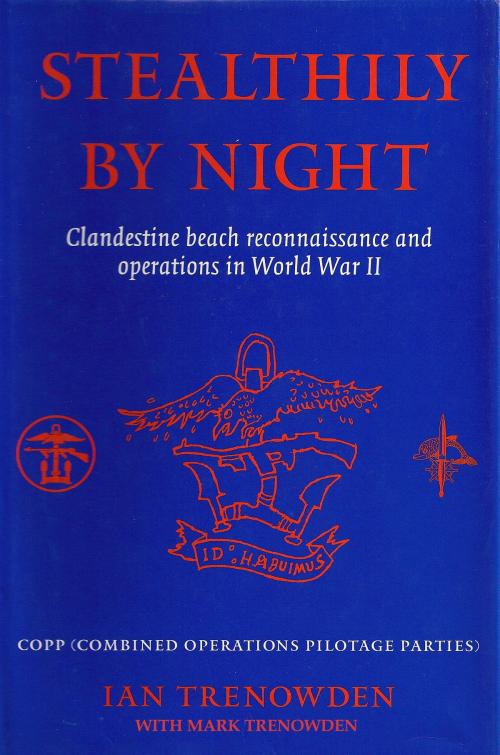Stealthily by Night - COPP (Combined Operations Pilotage Parties)
Clandestine Beach Reconnaissance And Operations In World War II
Nonfiction, History, Military| Author: | Ian Trenowden | ISBN: | 9781624882685 |
| Publisher: | BookBaby | Publication: | January 6, 1995 |
| Imprint: | Language: | English |
| Author: | Ian Trenowden |
| ISBN: | 9781624882685 |
| Publisher: | BookBaby |
| Publication: | January 6, 1995 |
| Imprint: | |
| Language: | English |
COPP (Combined Operations Pilotage Parties) were formed in December 1942, when the need for invasion beach reconnaissance and assault guidance for invasion fleets were officially recognised. COPPs were a revolutionary concept: independent teams, led by Lieutenants, Royal Nay qualified Navigators and Hydrographers – capable of navigating cruisers or aircraft carriers – teamed with Captains, Royal Engineers, preferably commando trained: to make small boat reconnaissances of heavily defended enemy beaches – with full knowledge of proposed major offences…Where their capture would compromise future strategy. The idea was scarcely popular to Chiefs-of-Staff: the SBS (Special Boat Service) already existed and it had always been envisaged that the military aspects of beach reconnaissance should be its responsibility…That COPP were set up at all, is entirely due to the efforts of Nigel Clogstoun Wilmott. His Uncle ’Cloggy’ – whose name he bore – had raised sapper companies of Australian miners, who served at Gallipoli, 1914-1918 war, from him Wilmott had learned the dangers of opposed landing on unknown, uncharted shores. And Wilmott had proved that small craft reconnaissance could be done. He and Roger Courtney of SBS had personally reconnoitred the German-held island of Rhodes, using their own improvised equipment in 1941. Not only did Wilmott secure approval for setting up COPP, he became its Commanding Officer; and personally worked out a rigorous training programme and participated in that too…making himself ill in the process, but it took a lot to stop him. This is an attempt not only to produce a history of COPP, but in the process to correct a few of the misconceptions about COPP, that have appeared in print to date. When Ian Trenowden was approached by a former COPPist - with a request to find documents for the Royal Engineers Museum, Chatham: he became interested in the subject. Invited to a COPP reunion, in Cambridge, he met Nigel Clogstoun Wilmott - the 'Father of COPP' - and was encouraged to produce this history, whose production has involved years of research As Public Records Office files on COPP are incomplete – archive material has had to be supplemented by eyewitness testimony of surviving participants. The cover of the book was designed by Ruari McLean, a former RNVR COPPist. The Id Habuimus ('We've had it!') emblem , Ruari designed in wartime days, when it seemed to him, COPP7 could well have done. 'We've had it!' was a popular, ironic catchphrase of the time, which may have originated in the RAF.
COPP (Combined Operations Pilotage Parties) were formed in December 1942, when the need for invasion beach reconnaissance and assault guidance for invasion fleets were officially recognised. COPPs were a revolutionary concept: independent teams, led by Lieutenants, Royal Nay qualified Navigators and Hydrographers – capable of navigating cruisers or aircraft carriers – teamed with Captains, Royal Engineers, preferably commando trained: to make small boat reconnaissances of heavily defended enemy beaches – with full knowledge of proposed major offences…Where their capture would compromise future strategy. The idea was scarcely popular to Chiefs-of-Staff: the SBS (Special Boat Service) already existed and it had always been envisaged that the military aspects of beach reconnaissance should be its responsibility…That COPP were set up at all, is entirely due to the efforts of Nigel Clogstoun Wilmott. His Uncle ’Cloggy’ – whose name he bore – had raised sapper companies of Australian miners, who served at Gallipoli, 1914-1918 war, from him Wilmott had learned the dangers of opposed landing on unknown, uncharted shores. And Wilmott had proved that small craft reconnaissance could be done. He and Roger Courtney of SBS had personally reconnoitred the German-held island of Rhodes, using their own improvised equipment in 1941. Not only did Wilmott secure approval for setting up COPP, he became its Commanding Officer; and personally worked out a rigorous training programme and participated in that too…making himself ill in the process, but it took a lot to stop him. This is an attempt not only to produce a history of COPP, but in the process to correct a few of the misconceptions about COPP, that have appeared in print to date. When Ian Trenowden was approached by a former COPPist - with a request to find documents for the Royal Engineers Museum, Chatham: he became interested in the subject. Invited to a COPP reunion, in Cambridge, he met Nigel Clogstoun Wilmott - the 'Father of COPP' - and was encouraged to produce this history, whose production has involved years of research As Public Records Office files on COPP are incomplete – archive material has had to be supplemented by eyewitness testimony of surviving participants. The cover of the book was designed by Ruari McLean, a former RNVR COPPist. The Id Habuimus ('We've had it!') emblem , Ruari designed in wartime days, when it seemed to him, COPP7 could well have done. 'We've had it!' was a popular, ironic catchphrase of the time, which may have originated in the RAF.















